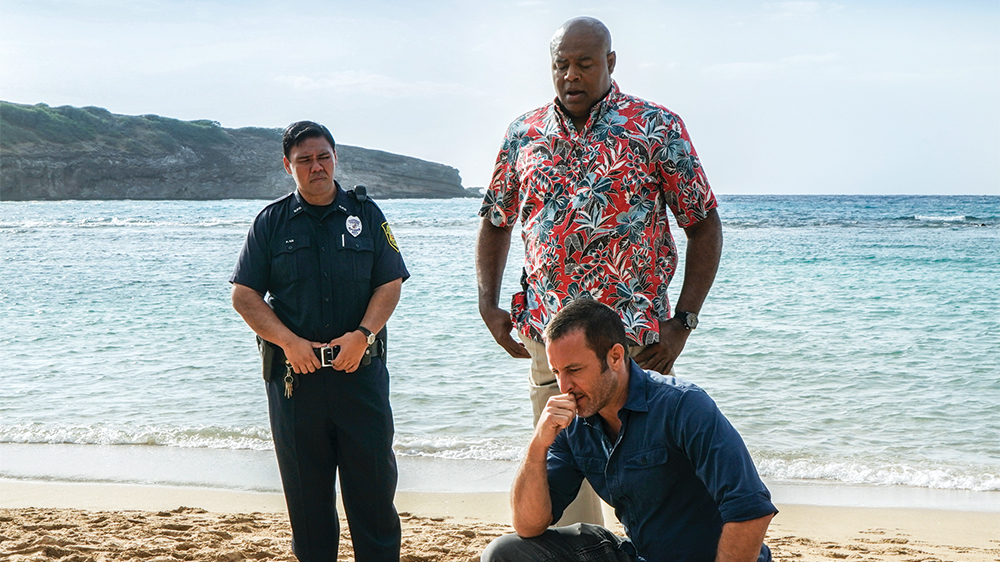Filmmakers Find Financial Incentives on Hawaii’s Oahu and on U.S. Virgin Islands
By Iain Blair
LOS ANGELES (Variety.com) – Oahu and the U.S. Virgin Islands beckon Hollywood and productions from around the world with lush scenery, sunny beaches — and generous, budget-friendly incentives that many filmmakers find too good to pass up.
HONOLULU AND OAHU
With its wide range of looks and locations, experienced crews, and the best infrastructure in Hawaii, Honolulu and the island of Oahu are widely regarded as the production center of the tropics.
The islands’ cinematic appeal and long tradition of production have attracted an impressive list of films and TV series, including two current network television series: the rebooted hit “Hawaii Five-0” (pictured above), now in its ninth year, and the rebooted procedural “Magnum, P.I.,” in its first year.
Both CBS series are overseen by producer, writer, showrunner Peter Lenkov and shoot at least 22 episodes per season.
Other Oahu-shot projects include ABC/Touchstone’s influential hit series “Lost,” co-created by J.J. Abrams and Damon Lindelof, which showcased the island’s diverse locations.
“All but four scenes in its six-year run were shot on-island, with Honolulu and Oahu doubling for settings including Korea, Los Angeles, Sydney, the Australian Outback, Munich, Afghanistan and even Buffalo, N.Y., in winter,” says Walea Constantinau, film commissioner, Honolulu Film Office.
Oahu also doubled for the Costa Rican Isla Nubar in the “Jurassic Park” mega-franchise, and provided locations for “Godzilla,” “Kong: Skull Island,” the 2017 box office juggernaut “Jumanji: Welcome to the Jungle,” and South America-set Netflix film “Triple Frontier.”
Constantinau adds that the islands’ many production services companies also assist global productions of all sizes from Europe, Asia, Oceania and Canada. Networks traveling to Oahu and Honolulu include the BBC, Fuji TV and Australia’s Nine Network. Numerous commercials are shot there every year as well.
Georja Skinner, division chief at Creative Industries Hawaii, Department of Business Economic Development & Tourism, reports that Hawaii has seen a big surge in production over the past two years, with 2018 spending hitting an estimated $438 million and generating some $757 million in economic impact, including household impact, and an estimated $48 million in state taxes. Total jobs are estimated at over 4,800.
“To keep up the momentum, we’re extending for another seven years our refundable tax credit,” says Skinner. The credit, which has been in effect since 2007, equals 20% of qualified production costs on Oahu, and 25% on the other Hawaiian Islands.
The island also supports its Creative Lab programs, an initiative designed to develop home-grown talent. Also in the works: plans for a 30-acre studio facility.
U.S. VIRGIN ISLANDS
With its postcard landscapes and unique culture, this small U.S. territory is considered by many a gem of the Caribbean. And to the film and television industry — as Film Office director Luana Wheatley notes — it offers “locations, convenience and the American Flag.”
But she stresses that while the U.S. Virgin Islands are known for their stunning coastlines, their appeal lies “way beyond beach. Here you’ll find a diversity of locations, ranging from rural farm land, ranches with cowboys, and scenic New England- or California-style shore drives.”
The U.S. Virgin Islands also boast long country roads, African savannah-like landscapes, flat plains, gorges, lush rain forests and rolling hills. Some of the towns hark back to old-world settlements and resemble quaint European villages.
Also available to filmmakers: Cosmopolitan settings, colorful Caribbean architecture and, of course, the legendary and ubiquitous breathtaking white sand beaches surrounded by turquoise waters.
The islands have doubled for such varied locations as Greece, Afghanistan, Mexico, Brazil and Key West, and credits include such high-profile films, TV series and commercial clients as “The Curious Case of Benjamin Button,” “The Twilight Saga: Breaking Dawn” and “The Shawshank Redemption.”
Other notable projects: “Ghost Ship of St. Thomas” (Travel Channel), HGTV’s “House Hunters International” and “Beachfront Bargain Hunt,” as well as ABC’s “The Bachelor.”
Companies that have shot on the islands include E! Entertainment, Food Network, DirecTV, T. Rowe Price, Target, Maxim Magazine, Nordstrom, Italian Vogue, Lands’ End, Target and REEF.
“You’ll always find an experienced film industry with English-speaking crews and the use of U.S. currency,” Wheatley notes.
The archipelago consists of four main islands: St. Croix, St. John, St. Thomas and Water Island. Additionally there are countless outer islands and cays. Each island has its own character and unique locations and all can be scouted by helicopter within an hour.
The official language of the U.S. Virgin Islands is English and right-to-work laws apply. Plus, no visas or passports are required for U.S. citizens.
The destination welcomes year-round shoots, with an average temperature of 80 degrees Fahrenheit and water temperature of about 77 degrees. There’s no sales tax and productions get special exception from excise taxes, duty, bonds or carnets on importation of equipment and accessories.
The U.S. Virgin Islands filming incentive requires a minimum spend of $250,000, and has a funding cap of $2.5 million per year.

